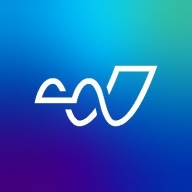

Splunk Enterprise Security and LogRhythm Axon are competitive players in the SIEM market. Splunk Enterprise Security has the upper hand with its advanced analytics, while LogRhythm Axon stands out for its flexible threat detection.
Features: Splunk Enterprise Security is known for handling large-scale, complex data environments, providing advanced threat detection, and leveraging machine learning for predictive analysis. LogRhythm Axon focuses on efficient log management, offers powerful alerting mechanisms, and emphasizes comprehensive threat detection capabilities.
Ease of Deployment and Customer Service: LogRhythm Axon is favored for its simpler deployment and supportive customer service, offering robust onboarding and integration guidance. Splunk Enterprise Security, despite its powerful capabilities, may involve a more complex deployment due to its sophisticated setup, often requiring substantial technical expertise.
Pricing and ROI: Splunk Enterprise Security might entail significant setup costs, justifiable by its extensive capabilities, suggesting strong long-term ROI. LogRhythm Axon offers a more cost-effective initial investment, providing competitive economic benefits and efficient security outcomes.


LogRhythm Axon offers advanced threat detection and response capabilities for security operations teams. Known for its seamless integration with existing tools, it helps streamline workflows and enhance threat intelligence, making it a valuable asset for cybersecurity professionals.
LogRhythm Axon specializes in empowering security teams with the tools needed to protect against sophisticated threats. Through comprehensive log analysis and real-time monitoring, it delivers actionable insights that optimize threat detection and response. Designed with scalability and customization in mind, it caters to different business needs, helping users achieve efficient security management. Despite its robust feature set, users suggest enhancements in areas like reporting capabilities and ease of use, underscoring areas for future development.
What are some key features of LogRhythm Axon?LogRhythm Axon is highly effective across industries such as finance, healthcare, and retail, where data security is paramount. Its ability to provide real-time insights and adaptability to sector-specific needs ensures that organizations remain resilient against cyber threats. The implementation process often involves close collaboration with security teams to tailor the functionalities to specific industry requirements.
Splunk Enterprise Security is widely used for security operations, including threat detection, incident response, and log monitoring. It centralizes log management, offers security analytics, and ensures compliance, enhancing the overall security posture of organizations.
Companies leverage Splunk Enterprise Security to monitor endpoints, networks, and users, detecting anomalies, brute force attacks, and unauthorized access. They use it for fraud detection, machine learning, and real-time alerts within their SOCs. The platform enhances visibility and correlates data from multiple sources to identify security threats efficiently. Key features include comprehensive dashboards, excellent reporting capabilities, robust log aggregation, and flexible data ingestion. Users appreciate its SIEM capabilities, threat intelligence, risk-based alerting, and correlation searches. Highly scalable and stable, it suits multi-cloud environments, reducing alert volumes and speeding up investigations.
What are the key features?Splunk Enterprise Security is implemented across industries like finance, healthcare, and retail. Financial institutions use it for fraud detection and compliance, while healthcare organizations leverage its capabilities to safeguard patient data. Retailers deploy it to protect customer information and ensure secure transactions.
We monitor all Log Management reviews to prevent fraudulent reviews and keep review quality high. We do not post reviews by company employees or direct competitors. We validate each review for authenticity via cross-reference with LinkedIn, and personal follow-up with the reviewer when necessary.